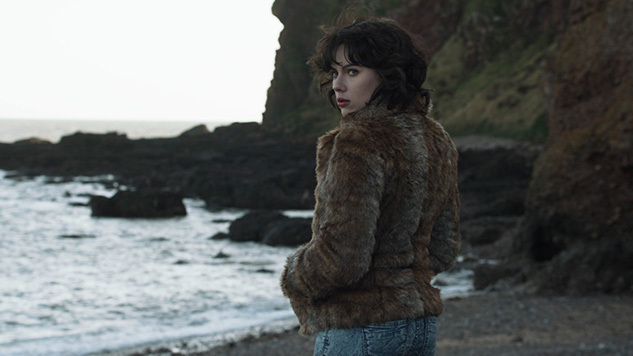
The 100 Best Movies on Netflix Right Now
by Paste Movies StaffThe best movies on Netflix right now can be hard to find, titles coming and going with sometimes seemingly little rhyme or reason—and definitely not always announced. (And a lot of Disney titles are leaving in December.) Which is why the number of films they’re bound to remove during any month—and more importantly, the number they’re likely to add—can be both aggravating and quite the surprise.
Still notable so far into 2019, looking at our list of the best movies of 2018, is seeing just how many Netflix originals our critics considered worthy. Not only are our Top-10-ranking films Black Panther and Spider-Man: Into the Spider-verse available on the service (as is Incredibles 2 and Burning), but so are so many movies one can find exclusively on Netflix: Shirkers, Apostle, The Night Comes for Us, Happy as Lazzaro, Private Life, The Ballad of Buster Scruggs and, of course, the very-Oscar-winning Roma. Not to mention: two new Netflix originals made our list of the best movies of 2019 so far, namely Homecoming and High Flying Bird, and Netflix just released American Factory, which found a spot on our best documentaries of the year (so far) list. Also, with The Irishman finally premiered and rightfully deemed a masterpiece, Netflix now offers some underseen Scorsese gems, such as Who’s That Knocking at My Door?, Mean Streets and Alice Doesn’t Live Here Anymore, in addition to Taxi Driver.
We also just published our big list of the films we deemed the best of the 2010s, many of which are available on Netflix and have been mentioned in the preceding paragraph.
So, rather than spending your time scrolling through categories, trying to track down the perfect film to watch, we’ve done our best to make it easy for you at Paste by updating our Best Movies to watch on Netflix list each week with new additions and overlooked films alike.
For extensive guides to the best movies on other platforms like HBO, Amazon Prime, Hulu, Showtime, Redbox, On Demand, YouTube, Shudder and The Best Movies in Theaters, visit the Paste Movie Guides.
Here are the 100 best movies streaming on Netflix right now:

100. Shadow
Year: 2018
Director: Zhang Yimou
Zhang Yimou’s latest is Shadow, a wuxia film based on the Chinese “Three Kingdoms” legend. Where Yimou’s recent filmography either favors substance over dazzle (Coming Home) or dazzle over substance (The Great Wall), Shadow does what the best of his movies do by sewing them together into one seamless package. As in Hero, as in House of Flying Daggers, the anti-gravity fight scenes are stunning to behold, but those movies put performance and action on the same plane, and Shadow deliberately separates them with a gorgeous monochrome palette, backgrounded by gray scale that lets the actors, and the copious amount of blood they spill throughout, hold its forefront. Here, in this tale of palace intrigue, Commander Yu (Deng Chao) employs a double to act in his stead (also Deng Chao)—his shadow, if you will—to seize control of a city of strategic value from invading forces against orders from his king (Zheng Kai). The film twists and turns, but through Zhang’s devoted stylization, the intricacies never overwhelm. Instead, the stylization does. —Andy Crump

99. Fire at Sea
Year: 2016
DIrector: Gianfranco Rosi
Fire at Sea is an imagistic grasp at a few months on the Mediterranean island of Lampedusa, 100 miles south of Sicily and the first glimpse of land for hundreds of thousands of refugees fleeing Africa and the Middle East. With no voiceover and little context, Italian director Gianfranco Rosi juxtaposes the lives of men, women and children barely sustaining themselves on the fringes of society, of humanity, with the everyday, mundane existences of the denizens of the island—both those who devote their lives to helping the refugees and those who work or play or eat big mounds of spaghetti without one thought for the deluge of sad souls passing over their home turf. In long takes and cinematography that aches with the need to push beyond the boundaries of the screen, Rosi indulges in the rhythm of that juxtaposition, daring us to move on from one atrocity after another in order to understand what moving on takes: a lot of boring afternoons and silent plates of spaghetti. —Dom Sinacola
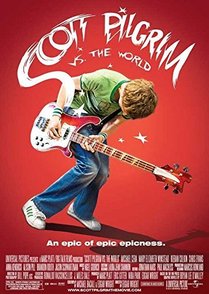
98. Scott Pilgrim vs. the World
Year: 2010
Director: Edgar Wright
The films of Edgar Wright’s “Cornetto trilogy” may get more emphasis as the core of the director’s oeuvre, but allow one to submit that Scott Pilgrim vs. The World is the “most Edgar Wright” film we’ve witnessed yet in the still-young filmmaker’s career. A brilliant adaptation of Bryan Lee O’Malley’s comic book series of the same name, the film is a perfectly cast wonder of an action comedy that translates with preternatural ability the comic tension between banality and bombast present on the page. Scott’s (Michael Cera) existence as a slacker musician in a crappy Toronto indie rock band isn’t exciting or glamorous, which makes it all the funnier when his day-to-day romantic life is a series of climactic, overly dramatic videogame boss battles. Each Wright presents with a hyperkinetic style that revels in its joyful disconnect from reality or consequences. Freed from such trivial matters, Wright can present dynamic action sequences that still have time for clever asides and banal workplace humor, simultaneously getting the absolute best out of every person he has on hand. Really: When has Brandon Routh, as an actor, been put to better use than as an egomaniacal vegan with psychic powers? An early-career Brie Larson as rock singer Envy Adams is a bonus as well. —Jim Vorel
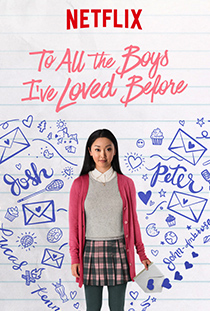
97. To All the Boys I’ve Loved Before
Year: 2018
Director: Susan Johnson
To All the Boys I’ve Loved Before, the teen scene’s newest runaway hit, is a flat-out excellent film. It is not excellent “for a teen flick.” It is not excellent “for a romantic comedy.” It is excellent for a film. TATBILB fully inverts the 80/20 ratio: Within the first 20 minutes, all five of the deeply private love letters our daydreamy, emotionally buttoned-up protagonist Lara Jean (Lana Condor) has written to her childhood crushes over the years have been stolen and mailed out—including the one to her neighbor and best friend, Josh (Israel Broussard), who just happens to also be her older sister’s just barely ex-boyfriend. This swift puncturing of any protracted emotional dishonesty Lara Jean might have hoped to indulge in, well, forever, leaves the film’s final eighty minutes free for her to embrace some really radical emotional honesty. That TATBILB allows Lara Jean to accomplish this not in spite of but through the fanfic-favorite trope of “fake dating” another, less-risky letter recipient (Noah Centineo’s ridiculously charming Peter Kavinsky) is a story strength. Of course, all the emotional honesty in the world wouldn’t matter if TATBILB’s leads didn’t burn with chemistry. Fortunately, Lana Condor and Noah Centineo can get it. Condor and Centineo are undeniably the stars of the show, but TATBILB doesn’t rest on their charismatic laurels: Mahoro as Lucas is a foxy ball of friendliness; Madeleine Arthur as Lara Jean’s best (girl) friend, Chris, is just the wide-eyed punk weirdo she needs to be; Janel Parrish plays against type as the sweet and steel-spined Margot; Anna Cathcart steals every scene as Lara Jean’s meddling little sis, Kitty; and John Corbett plays the healthily engaged version of Kat Stratford’s single OBGYN dad with a discernible glee. The importance of Lara Jean and her sisters being half-Korean, and the majority of the cast (along with Mahoro) non-white, is hard to overstate, but it isn’t the most impressive thing about the cast by a long shot. In a genre that can so often see its characters lean too far into caricature, Lara Jean’s world is instead populated with teens—and through them, love—you can believe in. —Alexis Gunderson

96. 13th
Year: 2016
Director: Ava DuVernay
Director Ava DuVernay has successfully made a documentary that challenges and even dismantles our collective understanding of one of the most dangerous notions of our time: “progress.” How do we define progress, and who precisely gets to define it? 13th is a captivating argument against those who measure progress with laws that pretend to protect American citizens and amendments, and even to uphold the Constitution. It is a deftly woven and defiant look at how clauses within those amendments (specifically the lauded 13th) and the language of our political system both veil and reveal a profound and devastating truth about America: Slavery was never abolished here, DuVernay and the participants in the film argue. It was simply amended, and it continues to be amended in 2016, with the constant evolution of the criminal justice system. It’s a bold and terrifying statement to make, but in using a documentary instead of, say, a narrative film, DuVernay is able to point directly to that history and to those people who have defined “progress” for black Americans. In doing so, she draws a line directly from the 13th amendment, to today’s America, which has the highest rate of incarceration in the world. Like some of the best documentaries of our time, 13th is not just a film, but a demand; it’s a call to reject dangerous reiterations, specifically newer and newer Jim Crows. DuVernay’s work doesn’t expressly name what we might build in their place, but it demands that those of us watching resist the seduction of sameness disguised as slow progress, and imagine something greater: actual freedom. —Shannon M. Houston
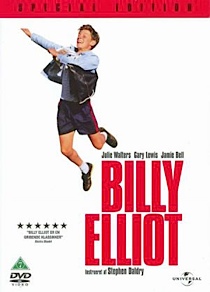
95. Billy Elliot
Year: 2000
Director: Stephen Daldry
On the surface, Billy Elliot appears to be the archetypal tale of an outsider who is driven to follow his own path at all costs, but the story of a boy (Jamie Bell) from depressed, working-class England who mortifyingly discovers that ballet is his life’s ambition, is saved from cliché by Stephen Daldry’s slightly quirky, at times witty, always deeply sympathetic portrayal of the pain of finding one’s voice in adolescence. The tearjerker caused such an impact worldwide, it was made into a Tony award-winning musical scored by none other than Elton John. —Emily Riemer
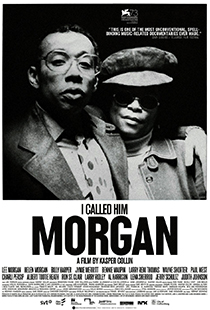
94. I Called Him Morgan
Director: Kasper Collin
I Called Him Morgan is the story of two troubled people, one of whom killed the other. Documentarian Kasper Collin—who previously made My Name Is Albert Ayler, also about a jazz musician—looks at the difficult, abbreviated life of trumpeter Lee Morgan, who was shot dead in the winter of 1972 in New York. It’s not a mystery who pulled the trigger—it was his common-law wife, Helen, who was more than 10 years his senior—but I Called Him Morgan isn’t about solving a crime, rather, it’s about connecting the dots regarding why the crime happened. Throughout the film, you feel the slow, grim pull of inevitable tragedy set against a lush visual palette. (Oscar-nominated Arrival cinematographer Bradford Young is one of I Called Him Morgan’s credited cameramen.) Talking heads’ tales are crosscut with dreamy images—snowy nights in New York, a hypnotically colorful fish tank—that always feel pertinent to what’s being discussed. And then there are the interview subjects and the milieu. Jazz musicians such as Wayne Shorter and Charli Persip talk about their friend with specificity and insight, and Lee Morgan’s music—as well as the music he played in other people’s bands—fills the soundtrack. The film will be heaven for jazz aficionados, but those who don’t know the difference between bebop and hard bop won’t feel lost. Collin understands that his film is about people, not art, but his deft storytelling—and the endless sadness that comes from his tale—flexes its own nimbleness and beauty. —Tim Grierson

93. Who’s That Knocking at My Door?
Year: 1967
Director: Martin Scorsese
Look at Who’s That Knocking at My Door? as the blueprint for Martin Scorsese’s career, packaged in 90 minutes of running time: Machismo, alcoholism, misogyny, and spiritual identity take up prime real estate here, orbiting Harvey Keitel’s Catholic Italian American lad drifting between adulthood and arrested young male boisterousness with his neighborhood buddies. They drink. They lay about. They watch Charlie Chan movies. They peruse Playboy. Against the backdrop of New York City, Scorsese’s forever favored locale, they do little else. It’s the introduction of a woman, credited as “Girl” and played by Zina Bethune, that disrupts the cycle and slowly draws Keitel’s J.R. away from his old life as Scorsese contrasts the temptations of that life with the redemptive benefits of a committed relationship. Who’s That Knocking at My Door is a director’s film, belonging to Scorsese far more than his cast. It’s a rough movie, but it’s a first movie, and as Scorsese’s first movie it demands examination the way dusty artifacts demand archaeological scrutiny. Even in 1967, he had obvious prowess behind the camera, the confidence of a young man with the latent talent of a master. (At 76, he has the former and has long progressed beyond the latter.) —Andy Crump

92. Ralph Breaks the Internet
Year: 2018
Directors: Phil Johnston, Rich Moore
When it was released in 2012, Wreck-It Ralph hit theatergoers over the head with its incredible animation, videogame call backs and moving story. Its success made a sequel inevitable, and Ralph Breaks the Internet picks up where the original film left off. Ralph (John C. Reilly) has come to terms with playing the villain in his “home” videogame, Fix-It Felix Jr., during the day, in large part because he gets to spend time with his best friend, Vanellope (Sarah Silverman), during their off-hours. Their lives together are routine, which is just how Ralph likes it. Vanellope, on the other hand, is itching for something more. Like any princess, she longs to escape her gilded tower. It’s hard to blame her—Vanellope’s game, Sugar Rush, only has three race tracks. Having memorized every twist and turn, she’s grown bored of the predictability—a real problem given racing is Vanellope’s passion. To his credit, Ralph tries to remedy her discontent, surprising his friend with an addition to one of the tracks. But when the arcade owner adds wifi, Miss Von Schweetz gets a taste of the freedom she desires. Bigger race tracks, new friends and the endless expanse of options offered on the ’net bring the kind of wish fulfillment Vanellope has been seeking. (Ralph just wants to go home.)
As the title suggests, and as sequels tend to do, Ralph Breaks the Internet greatly expands the Wreck-It Ralph universe even as it further develops the tensions inherent in the relationship status quo present when the film begins. Wreck-It Ralph existed in a self-contained bubble—a villain longed to be a hero. A glitch longed to be fixed. Together, they help one another understand the beauty within and save one another. Ralph Breaks the Internet bursts out of those confines and escapes to the larger stage of the internet.Directors Phil Johnston and Rich Moore are no strangers to world building, having worked together on Zootopia, and it’s in bringing worlds to life that the power of Disney’s team of artists and craftspeople is most apparent (and impressive). But ultimately, much like the original, Ralph Breaks the Internet delivers it strongest punches when it’s focused on the evolution of Ralph and Vanellope’s relationship. It’s clear pretty much from the start that their relationship has become toxic. Ralph, well-meaning as he may be, has formed an unhealthy attachment to his best friend. As we as a society continue to define toxic masculinity and what abuse looks like, Ralph Breaks the Internet feels like a timely introduction to the topic for children. Instead of being just another manifestation of the “girl power/you can be anything” trope, it populates the screen with women in powerful positions—as an actual CEO, as the leader of a dope car crew, and as a little girl trying to find her place in the world. It’s a reminder that girl power exists naturally; it does not need to be forced. That’s a message worth building a franchise around. —Joelle Monique

91. Head Count
Year: 2019
Director: Elle Callahan
Imagine the hopeless paranoia of John Carpenter’s The Thing mashed together with the languid atmosphere of David Robert Mitchell’s It Follows, in which isolated youth are hunted down by a relentless force capable of hiding in plain sight by mimicking their appearances. That’s Elle Callahan’s Head Count, a film with a dreamlike tone slowly overridden by an inexplicable nightmare. When a gaggle of 20-somethings get together at Joshua Tree for a mini vacation, they do what characters so frequently do in horror movies: Read a spooky story that accidentally summons a monster. In this case the monster is the Hisji, a shape-shifting entity that breaks prey psychologically before the killing begins. Accordingly, Callahan relishes the mental component of Head Count’s basic conceit, allowing the cast to slowly give in to suspicion and distrust while capitalizing on their collective uncertainty. At every turn, Callahan creates opportunities to scare the crap out of her audience, often in broad daylight or a well-illuminated room, where the viewer leasts expect to be terrified. The film violates safety and sanctuary on the strength of Callahan’s shrewd filmmaking. There’s room for improvement—the monster ultimately has too much origin for its own good—but Head Count is self-assured in its craftsmanship and announces Callahan as a director with promise and perspective. —Andy Crump
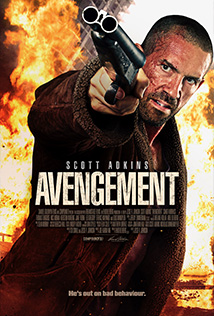
90. Avengement
Year: 2019
Director: Jesse V. Johnson
The second of three films directed by Jesse V. Johnson released in 2019, Avengement is as crystalline, as empirically precise, as micro-budget VOD martial arts action can aspire. With that kind of prolificacy, a journeyman director’s bound to do something right—which would be a valid assessment, were everything Johnson’s done not so undeniably solid. Thanks goes, of course, to Johnson’s muse, Vicious Beefcake Scott Adkins, a flawlessly sculpted humanoid so squarely planted in Johnson’s sweet spot—melodramatic, archly brutal action cinema with enough wit and heart to leave a bruise—a Johnson film without him as the protagonist doesn’t quite feel fully realized. Look only to Triple Threat, Avengement’s 2019 predecessor, to yearn for what could have been, mollified by a scene in which Adkins body slams a sedan going at least 40 mph. Triple Threat boasts three writers and a cavalcade of international action cinema stars, from Iko Uwais and Tony Jaa, to Tiger Chen and Michael Jai White (still in decent shape, but so outclassed by Adkins and his peers’ athleticism he seems pretty much immobile), while in Avengement Johnson works from his own script, winnowing the plot to a series of increasingly higher stakes brawls as wronged nobody Cain (Adkins) makes his bloody way through the criminal organization (led by his brother, no less) that left him to rot in prison. As is the case with Savage Dog and The Debt Collector (both on Netflix), Avengement thrives on the preternatural chemistry between director and star, the camera remarkably calm as it captures every amazing inch of Adkins in motion, beating the living shit out of each chump he encounters, Adkins just as aware of how best to stand and pose and flex to showcase his body. Charming character actors cheer from the sidelines; the plot functions so fundamentally we hardly realize we care about these characters until we’ve reached a satisfying end at their sides. Perhaps Scott Adkins is a better dramatist than we’ve come to expect from our kinetic stars anymore. Perhaps we’ve set our expectations too low. —Dom Sinacola
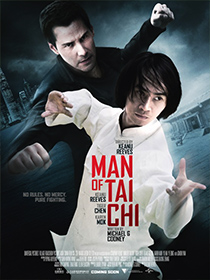
89. Man of Tai Chi
Director: Keanu Reeves
Year: 2013
Even today, our doubts fully behind us that the man is an all-time, absolutely singular movie star, it’s still a phrase that lodges in the throat: “Director: Keanu Reeves.” But for anyone who left the John Wick flicks loose-limbed and exhausted due to the sheer grace of Reeves’ action chops, it should come as absolutely no surprise that the man—the one and only Neo—can direct the fuck out of a martial arts movie. With little frills, barely a plot, a Tai Chi phenom in Tiger Chen (who also served as Reeves’ teacher and, for Kill Bill, Uma Thurman’s stunt double), a woman who seems smarter and serves more of a purpose in the plot than all the dudes beating each other senseless surrounding her, and Reeves’ ever-present, weird sonic repurporsing of the English language, Man of Tai Chi delivers pretty much what the title suggests: an exhilarating, inertial obsession both with movement as art as power and with those who wield it so well. Testament to Reeves’s intelligence as a self-didact who just wants to do right by those folks who put their trust in him over the course of his many-decade career, Man of Tai Chi represents all that anyone should rightly hope for when seeing who directed it. —Dom Sinacola

88. Legendary Weapons of China
Year: 1982
Director: Lau Kar-leung
Though a bit of a storytelling Gordian knot, Legendary Weapons of China’s interconnected plots makes for tons of colorful characters and combat. Its main narrative revolves around a group of “spiritual boxers,” martial artists attempting to train their bodies to resist the bullets of Western imperialist guns, committed also to hunting down former members of the group who have since admitted that stopping a bullet by flexing your abs probably isn’t possible. The film’s real attraction is the incredible array of styles: Ti Tan the impenetrable monk played by Gordon Liu, Maoshan “magic boxers” and more. As if that’s not enough, you also have the reason for the title: This film highlights the styles and uses of traditional Chinese weaponry better than few others of its ilk. Lau Kar-leung features 18 different weapons in total, many during the epic final scene where the hero and villain cycle through all of the legendary weapons as they probe the strengths and weaknesses of each bit of armament. It’s magnificent. —Jim Vorel

87. She’s Gotta Have It
Year: 1986
Director: Spike Lee
An explosively frank feature debut that immediately announced Lee’s brave, fresh new voice in American cinema, She’s Gotta Have It, shot like a documentary, is a levelheaded exploration of a young black woman named Nola (Tracy Camilla Johns) trying to decide between her three male lovers, while also flirting with her apparent bisexuality, in order to, first and foremost, figure out what makes her happy. What’s refreshing about the film is that Lee always brings up the possibility that “none of the above” is a perfectly viable answer for both Nola and for single women—a game changer in 1986. The DIY indie grainy black-and-white cinematography boosts the film’s in-your-face realism. —Oktay Ege Kozak
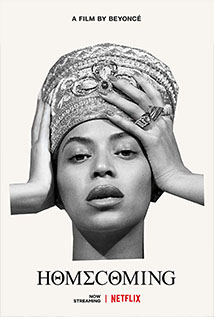
86. Homecoming
Year: 2019
Directors: Beyoncé Knowles-Carter, Ed Burke
Childish Gambino, Ariana Grande, Tame Impala: None of those performers, or any of the others at Coachella 2019, were able to match the grandiosity of Beychella, Beyoncé’s epic pair of sets at last year’s festival. Netflix’s Homecoming, a documentary written, produced and directed by Mrs. Knowles-Carter herself, features stunning footage of each weekend’s set and dives deep into the symbolism, production and eight-month rehearsal process behind Beychella. The film also arrived with a surprise live album encompassing the entire Coachella set as well as new music. It’s all just The Carters’ latest in a long line of masterpieces, a colossal, visually stunning spectacle that not only summarized Beyoncé’s 20-year career, but also Historic Black Colleges in an entirely new way. We see clips from football games at schools like Howard University and Alabama A&M interspersed with Beychella rehearsal footage, the entire performance and film a celebration of those institutions, perhaps even an antithesis to what most people would consider a primarily white experience. If you haven’t seen it yet, you might want to consider canceling your plans tonight: Bey deserves your full attention. —Ellen Johnson

85. The Conjuring
Year: 2013
Director: James Wan
Let it be known: James Wan is, in any fair estimation, an above average director of horror films at the very least. The progenitor of big money series such as Saw and Insidious has a knack for crafting populist horror that still carries a streak of his own artistic identity, a Spielbergian gift for what speaks to the multiplex audience without entirely sacrificing characterization. Several of his films sit just outside the top 100, if this list were ever to be expanded, but The Conjuring can’t be denied as the Wan representative because it is far and away the scariest of all his feature films. Reminding me of the experience of first seeing Paranormal Activity in a crowded multiplex, The Conjuring has a way of subverting when and where you expect the scares to arrive. Its haunted house/possession story is nothing you haven’t seen before, but few films in this oeuvre in recent years have had half the stylishness that Wan imparts on an old, creaking farmstead in Rhode Island. The film toys with audience’s expectations by throwing big scares at you without standard Hollywood Jump Scare build-ups, simultaneously evoking classic golden age ghost stories such as Robert Wise’s The Haunting. Its intensity, effects work and unrelenting nature set it several tiers above the PG-13 horror against which it was primarily competing. It’s interesting to note that The Conjuring actually did receive an “R” rating despite a lack of overt “violence,” gore or sexuality. It was simply too frightening to deny, and that is worthy of respect. —Jim Vorel

84. The Endless
Year: 2017
Director: Justin Benson, Aaron Moorhead
Brotherhood’s a trip. Just ask Aaron Moorhead and Justin Benson, the horror filmmaking duo responsible for 2012’s Resolution, the “Bonestorm” segment in 2014’s VHS: Viral, and, in the same year, the tender creature romance Spring. Their latest, The Endless, is all about brotherhood couched in unfathomable terror of Lovecraftian proportions. The movie hinges on the petulant squabbles of boys, circular arguments that go nowhere because they’re caught in a perpetual loop of denial and projection. If the exchanges between its leads can be summed up in two words, those words are “no, you.” Boys will be boys, meaning boys will be obstinate and stubborn to the bitter end. Though, in The Endless, the end is uncertain, but maybe the title makes that a smidge obvious. Brothers Aaron and Justin Smith (played, respectively, by Moorhead and Benson, who gel so well as brothers that you’d swear they’re secretly related) were once members of a UFO death cult before escaping and readjusting to life’s vicissitudes: They clean houses for a living, subsist primarily on ramen, and rely so much on their car that Aaron’s repeated failure to replace the battery weighs on both of them like the heavens on Atlas’ shoulders. Then, out of the blue, they receive a tape in the mail from their former cultists, and at Aaron’s behest they revisit Camp Arcadia, the commune they once called home. Not all is well here: Bizarre bonelike poles litter Arcadia’s outskirts, flocks of birds teleport from one spot to another in the time it takes to blink, Aaron and Justin keep having weird déjà vu moments, and worse: There’s something in the lake, a massive, inky, inexplicable presence just below the surface. (Its image is only seen on camera once, but once is enough to make an impression.) Woven through the film’s eldritch dread are Moorhead and Benson. Their characters are locked in a cosmic struggle with a nameless adversary, but the narrative’s gaze is focused inward: On the Smiths, on brothers, on how far a relationship must stretch before it can be repaired. Intimacy is a staple element of Moorhead and Benson’s filmograpy. Here, the intimacy is fraternal, which perhaps speaks to how Moorhead and Benson feel about each other. They may not be brothers themselves, but you can’t spend your career making movies with the same person over and over again without developing an abiding, unspoken bond with them. —Andy Crump

83. Enemy
Year: 2015
Director: Denis Villeneuve
The chance to portray twins or at-odds characters in a single film is catnip for actors of a certain level of ambition, though not without potential pitfalls. The impulse to chew scenery or present grand differentiation is often difficult to resist. Enemy, though, which reteams Jake Gyllenhaal with Prisoners director Denis Villeneuve (though it was actually shot before that film), finds the actor trading in similarly subdued and thoughtful tones as he did in that kidnapping drama. Adapted from the late Nobel Prize-winning author José Saramago’s 2004 novel, The Double, the film offers up more than just a meaty pair of roles for Gyllenhaal. A woozy, danger-infused rumination on identity that triggers tripwires of personal panic and awakened sexual compulsion, Enemy is like a cold glass of water to the face of cinematic formalism. Adam Bell (Gyllenhaal) is a glum and distracted history professor at a small-time Canadian college whose relationship with his girlfriend, Mary (Mélanie Laurent), seems to be winding down, locked as he is in the throes of dark proclivities he can’t express. Watching a movie recommended by a coworker, he spots a bit-part actor named Anthony Clair (Gyllenhaal again) who looks exactly like him. At once confused and oddly bewitched, Adam goes to great lengths to track down Anthony, who lives in another city with his pregnant wife, Helen (Sarah Gadon), and seems to have quit acting. Then he contacts him. A complex psychosexual game ensues that has consequences for all. Through it all, Villeneuve exudes a masterful sense of control and purpose. The sound design, by Oriol Tarragó, luxuriates in quiet expanses, giving plenty of eerie space to original music from composers Danny Bensi and Saunder Jurriaans, which incorporates throbbing drops of bass mixed with icy piano notes. Cinematographer Nicolas Bolduc, meanwhile, embraces a desaturated visual palette that at times feels splashed with brown mustard, which in turn complements austere production design by Patrice Vermette. Of course, none of this would much matter if Enemy was hung on the peg of an actor with less command of his craft than Gyllenhaal. As fantastical as Enemy is at certain moments, Gyllenhaal, along with Villeneuve, brings the stark horror of this psychological grappling match to life. And it’s utterly absorbing. —Brent Simon
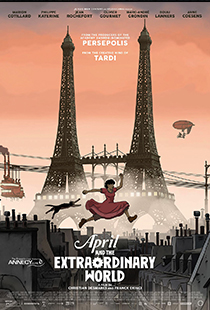
82. April and the Extraordinary World
Year: 2015
Director: Christian Desmares, Franck Ekinci
Keeping real life global history straight in narratives that leapfrog across decades and centuries is tough enough—making sense of alternate history when it’s articulated at breakneck speed throughout multiple eras of European cultural advancement is just downright strenuous. Think of April and the Extraordinary World as an intense workout for your brain, during which the film shapes a surrogate Earth in the span of mere minutes and fires off salvos of detail, visual and aural alike, in the pursuit of recalibrating the past. The inattentive and unimaginative need not apply. Good news for diligent viewing types, though: April and the Extraordinary World is pretty great, a compact exercise in world building without handholding that rewards a patient, observant audience. If you can keep pace with the film’s plot deployment, you’ll be in for a wonderful ride littered with talking cats, fabulous steampunk backdrops, rollercoaster excitement and terrific characters, all drawn through the fundamental beauty of cel animation. April and the Extraordinary World reminds us of the aesthetic value of traditional animation and the necessity of human ingenuity, all without treating its audience like idiots. —Andy Crump

81. Strong Island
Year: 2017
Director: Yance Ford
African American filmmaker Yance Ford’s Strong Island is a paean to his brother William, who was shot dead in 1992 by a white mechanic during an argument. The shooter never faced trial—it was ruled self-defense—and in the ensuing decades Ford and his family have wrestled with the injustice. Strong Island is Ford’s way of working through the pain and anger that still consume him, mixing interviews with direct addresses to the camera. It’s a slightly unfocused work (Can anyone fault Ford for being unable to marshal his grief into a completely organized treatise?) but its rawness fuels its astounding strength. —Tim Grierson
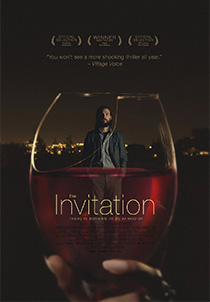
80. The Invitation
Year: 2016
Director: Karyn Kusama
The less you know about Karyn Kusama’s The Invitation, the better. This is true of slow-burn cinema of any stripe, but Kusama slow-burns to perfection. The key, it seems, to successful slow-burning in narrative fiction is the narrative rather than the actual slow-burn. In the case of The Invitation, that involves a tale of deep and intimate heartache, the kind that none of us hopes to ever have to endure in our own lives. The film taps into a nightmare vein of real-life dread, of loss so profound and pervasive that it fundamentally changes who you are as a human being. That’s where we begin: with an examination of grief. It’s remarkable for its foundation, for all of the substantive storytelling infrastructure that Kusama builds the film upon in the first place. The film starts in earnest as Will (Logan Marshall-Green in top form) arrives at a dinner party his ex-wife, Eden (Tammy Blanchard), is throwing at what once was their house. He has brought his girlfriend, Kira (Emayatzy Corinealdi), along with him. But something is undeniably off at Eden’s place, and because Will is the lens through which Kusama’s audience engages with the film, we cannot tell what that something is. There is oh so much more to be said about The Invitation, especially its climax, where all is revealed and we see Will’s fears and Eden’s spiritual affirmations for what they are. Until then you’ll remain on tenterhooks, but to Kusama, jitters and thrills are sensations worth savoring. Where we end is obviously best left unsaid, but The Invitation is remarkable neither for its ending nor for the direction we take to arrive at its ending. Instead, it is remarkable for its foundation, for all of the substantive storytelling infrastructure that Kusama builds the film upon in the first place. —Andy Crump
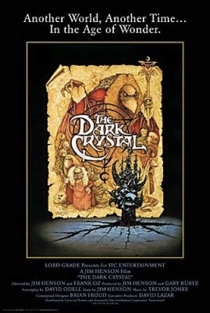
79. The Dark Crystal
Year: 1982
Directors: Jim Henson, Frank Oz
In 1982, audiences were mixed on Jim Henson’s The Dark Crystal, which was very much not in the same vein as The Muppets or Sesame Street. The strange, mystical film reveled in its fantasy setting, and in particular, its unique character design. One of the primary races in The Dark Crystal, the Skeksis, are massive, grotesque and wizened vulture-like creatures reminiscent of the inhabitants of Versailles—if those inhabitants were already dead. That was enough to spook parents looking for softer family-friendly fare in the ’80s, and perhaps rightfully so. And yet, revisiting the film in 2019 ahead of Netflix’s prequel series, it still feels bold. The Dark Crystal was ahead of its time in a number of ways, both in its “puppets, but dark!” aesthetic as well as its outstanding use of animatronic arts. There are sequences within The Dark Crystal that make time for the unnamed, fascinating, totally bizarre creatures that inhabit the world of Thra. These moments aren’t tied to plot, only world-building—which is a luxury few fantasy properties feel they can afford. A now rarely-used narrative device sets up the world of Thra and the origin of the central conflict: There is a life-giving crystal that was broken in two, giving rise to two opposing races. The aggressive Skeksis took over the throne while their counterparts, the gentle Mystics, retreated to the mountains. Caught up in the subsequent war was an elf-like race called Gelflings, all of whom have now been eradicated other than Jen (adopted by the Mystics) and—as we later come to find—Kira (adopted by the Podlings). Jen is also the one who has been chosen to find the shard to restore the crystal, bringing peace and balance to Thra. (That opening narration saves almost an entire act of exposition, and allows The Dark Crystal to have a hugely respectable 93-minute runtime.) Aside from a unique take on a familiar “chosen one” fantasy trope, where The Dark Crystal really shines is in its visual splendor. It’s clear how intricate and ornate these creatures are for casual Muppets fans as well as modern audiences. The design work—from the large-scale characters down to Fizzgig—creates an environment where there’s something intriguing to spot in every frame. Thra is a dying world that nevertheless feels fully alive because of the care that Henson, Gary Kurtz and Frank Oz put in to managing all of these extraordinary details. —Allison Keene

78. Mississippi Grind
Year: 2015
Directors: Ryan Fleck, Anna Boden
Filmmakers Ryan Fleck and Anna Boden don’t work within genres as much as they wander around inside them. Their Half Nelson took on the inspirational-teacher film, while Sugar had a darker, more realistic perspective on the prototypical sports movie. Repeatedly, the filmmaking duo utilize the tenets of a genre but mostly focus on their characters’ specific desires, opening themselves up to criticism that their movies are too meandering for their own good. But oftentimes, those laid-back, intimate observations are where the most interesting things happen. Perhaps it’s appropriate, then, that Fleck and Boden finally got around to making a Robert Altman film (before taking on the MCU with Captain Marvel). Altman, of course, was the king of the revisionist genre movie, and Fleck and Boden have taken his underrated 1974 gem California Split as their guide for Mississippi Grind, a low-key but affecting story about two gamblers (played by unexpected companions Ryan Reynolds and Ben Mendelsohn) on a car trip. To be sure, this terrain—addiction, the road movie, the buildup to the big competition—has been explored plenty by other filmmakers. And, yet, moment to moment, Mississippi Grind digs into you. —Tim Grierson
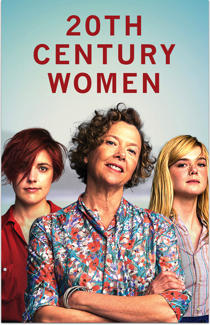
77. 20th Century Women
Year: 2016
Director: Mike Mills
The feeling of watching writer-director Mike Mills’ 20th Century Women is akin to that of witnessing a mind working through the twisted byways of his characters’ psyches and his themes as if digesting his thoughts right in front of us. He’s unafraid of breaking away from the film’s major arcs for the sake of digressions that fill us in on both historical context and characters’ backstories. That embrace of irresolution extends to the characters themselves, all of whom show many different sides to us, with Mills showing no interest in neatly explaining away their contradictions. 20th Century Women almost feels like a dialectical essay disguised as a comedy-drama—a late-period Jean-Luc Godard movie except with actual flesh-and-blood human beings instead of glorified mouthpieces for his philosophical aphorisms. The patchwork narrative style vividly expresses the confusion at the heart of these characters and of the time period in U.S. history it evokes: a country hinging on the precipice between the relative selfless idealism of the 1970s and the rampant materialistic self-interest of the 1980s. It’s a large subject for any movie to tackle, but the beauty of 20th Century Women is that the warmly empathetic Mills never loses track of the characters’ anguished beating hearts. —Kenji Fujishima
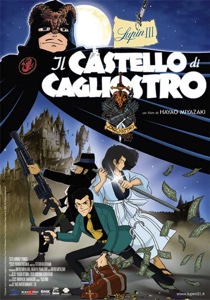
76. Lupin III: The Castle of Cagliostro
Year: 1979
Director: Hayao Miyazaki
The nature of Miyazaki’s oeuvre is such that it brims with an embarrassment of riches, each film in its own part situated indelibly into the continuum that is the anime canon. His films garner so much acclaim for their visual storytelling and emotional virtuosity that even those few that could be considered his “worst” movies still rank leagues above those animators who only aspire to his status. Case in point: Lupin III: The Castle of Cagliostro. Miyazaki’s take on Kazuhiko Kato’s notorious master criminal is at once a rip-roaring heist film with heart and what might arguably be Miyazaki’s lesser films. Chalk it up to Miyazaki’s nascent efforts as a director; Castle of Cagliostro suffers from a plodding middle half and a disappointingly simplistic antagonist while still somehow managing to sparkle with his signature charm peeking through the baggage of a preexisting work. Fans of the series passionately criticized the film for relieving Lupin of his anarchic predilections and instead casting him in the mold of a true gentleman thief, stealing only when his nebulous sense of honor permits it. In any case, The Castle of Cagliostro remains an important and essential artifact of Miyazaki’s proto-Ghibli work. A flawed Miyazaki film is a triumph all the same. —Toussaint Egan